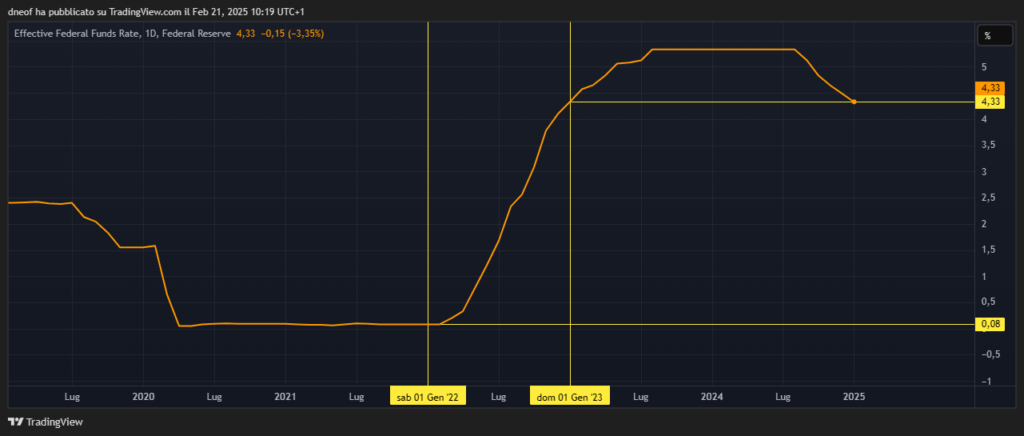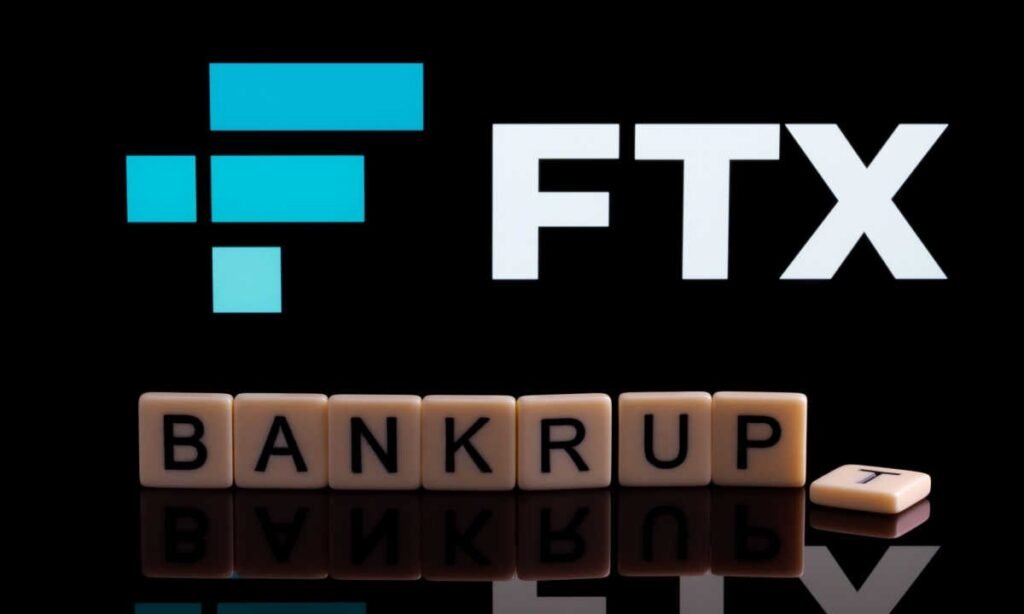In this history lesson we are going to briefly describe what happened in two very particular years, 2008 and 2022, which deeply marked the traditional finance and cryptocurrency sector respectively. These were two very harsh crises that affected entire sectors of finance and the economy in a systemic way, and the underlying mechanisms can be conceptualized as well as compared. There are many similarities between the two, although the circumstances are different.
CRISIS IN TRADITIONAL FINANCE
The 2008 financial crisis, known as “The Great Recession” or “Global Financial Crisis” (GFC), was a global event that marked the end of an era of deregulation and blind trust in financial markets. The GFC was caused by the combination of a housing bubble and a financial system overly exposed to complex and very risky financial instruments/products. The effects of the aftermath had repercussions for many years around the world.
The 2008 crisis was the culmination of a deregulated financial-economic system in which banks enjoyed a great deal of freedom in creating financial instruments/products that were often not provided with the proper collateral. In fact, from the 1980s onward many of the restrictions imposed on the banking system after the Great Depression were removed (e.g. Garn-St. Germain Depository Institutions Act 1982 and Gramm-Leach-Bliley Act of 1999). Alan Greenspan, who headed the Federal Reserve from 1987 to 2006, promoted a policy of low interest rates and interventions aimed at supporting financial markets (the so-called “Fed Put”). These and many other circumstances fueled the credit boom and speculation over the decades, particularly in the stock and real estate markets, creating the conditions for the 2008 disaster.

CAUSES
In the years following the dot-com bubble (2000) and the September 11, 2001, attack, the Federal Reserve lowered interest rates, as mentioned earlier, from 6.5 percent to 1 percent, easing access to credit to lift the real economy out of its contractionary phase. Although the goal was to revive the U.S. economy, the lowering of interest rates caused unsustainable growth in real estate values.
In fact, the optimism of all economic and financial participants and the deregulation led to the indiscriminate granting of mortgages, even to those with poor creditworthiness (subprime mortgages). In addition, practices such as“ninja loans” (literally: “No Income No Job,” or loans to people with no income, employment or collateral) and the securitization of mortgages through financial instruments such as Collateralized Debt Obligations (CDOs) increased systemic risk.
Rating agencies, including Standard & Poor’s, Moody’s and Fitch Ratings, in full conflict of interest, classified those financial products as safe, contributing to the spread of excessive exposure to subprime mortgages by financial institutions around the world. In 2006-2007, the U.S. housing market reached bubble levels, so demand was no longer able to sustain such high house prices and in fact these slowly began to decline.
At the same time, the U.S. central bank had raised interest rates from 1 percent in June 2004 to 5.25 percent in July 2006, making adjustable-rate mortgages unaffordable for many borrowers. This caused a wave of defaults that generated a domino effect on banks and investors.

RELEVANT EVENTS
In March 2008, Bear Stearns, a major investment bank, collapsed under the weight of its subprime mortgage exposures and was acquired by JP Morgan. On September 15, 2008, the failure of Lehman Brothers, with over $600 billion in assets, marked the point of no return.
The crisis of confidence spread quickly, causing bank runs and the collapse of financial institutions around the world. To avoid a total collapse, the U.S. government intervened with massive bailouts, using public funds to bail out institutions deemed “too big to fail.”
Multinational U.S. firms such as AIG (American International Group), a global insurance company offering life, property, casualty and financial services policies, including derivative instruments and credit default swaps, and GM (General Motors), one of the world’s largest automakers, which designs, manufactures and sells cars and commercial vehicles under brands such as Chevrolet, Cadillac, GMC and Buick, would have failed without the bailout either because of excessive exposure to the toxic financial products described above or because of a lack of liquidity and/or credit useful for carrying out ordinary and extraordinary operations in the company.
ANALYSIS IN RETROSPECT
The crisis highlighted the limitations of the idea that markets are always efficient and self-regulating. The absence of adequate supervision, the use of complex financial instruments and irrational investor behavior led to one of the worst recessions in modern history. The 2008 bailout, estimated at $5.7 trillion, represented an unprecedented intervention to save the global financial system, with lasting economic and social consequences.
Measuring from high point to low point, from October 2007 to March 2009 the S&P500 stock index recorded -58% and Nasdaq100 -54%.
From June 2007 to December 2008, the U.S. 10-year government bond rate went from 5.3% to 2.0%.
The figures just given were exceeded on very few occasions in the past, but the real damage was felt by the real economy and ordinary people, as the unemployment rate rose from 5% in March 2008 to 10% in September 2009. The unemployment rate would return to pre-GFC levels in August 2015, so about 7 years later.
European financial markets fared even worse, as the Euro Stoxx 50 (SX5E) recorded -61% from June 2007 to March 2009.
It was as a result of this catastrophic crisis that Bitcoin was created.
CRYPTO SECTOR CRISIS
The crisis of 2022 began in the previous year: when the price of Bitcoin on Wednesday, November 10, 2021 touched $69,000; from that day began the so-called “bear market,” i.e., a period when the prices of an asset or an entire sector (technology, real estate, etc.) experience very large declines. The most important reason that brought about the end of the expansive phase of cryptocurrency prices, known as the “bull market,” was the change in monetary policy from expansive to restrictive by the Federal Reserve (FED) and most central banks of developed country economies.
Aggressive interest rate hikes by the FED and ECB – 2022
As mentioned the previous paragraph, the FED raised interest rates aggressively to counter inflation in the U.S., which had reached levels not seen in the previous 40 years, prompting investors to reduce exposure to risky assets such as tech stocks and cryptocurrencies. Bitcoin and other cryptos reacted very negatively: BTCUSD recorded -75 percent from its 2021 highs, falling from about $69,000 to less than $16,000 within 12 months.
The FED, led by Chairman Jerome Powell, increased interest rates dramatically, from 0.25 percent in March 2022 to about 4.5 percent by the end of the year, thus ending the Zero Interest Rate Policy (ZIRP) program. In addition, also the FED kicked off Quantitative Tightening (QT), which consisted of reducing its balance sheet by letting securities expire without reinvesting them, initially at a pace of $47.5 billion per month ($30 billion in Treasuries [U.S. government bonds and $17.5 billion in MBS, i.e., Mortgage Backed Securities]). From September 2022, the pace was increased to $95 billion per month ($60 billion of Treasuries and $35 billion of MBS).
In summary, the series of hikes had a significant impact on financial markets, causing:
- The rise in the cost of money, making speculative investments less attractive;
- The appreciation of the U.S. dollar, which penalized assets denominated in other currencies;
- The rise in U.S. government bond yields, prompting investors to prefer safer assets over Bitcoin and cryptocurrencies.
The ECB, after years of negative rates and very expansionary monetary policies,also had to follow a similar path to the Fed. After a long period of zero or subzero benchmark rates, the central bank began raising rates starting in July 2022, ending the year with a benchmark rate of 2.5 percent.

In this financial climate, let’s examine the most important events that affected the crypto sector in 2022, the so-called annus horribilis, with a direct impact on the prices of major digital assets:
Collapse of Terra (LUNA) and UST – May 2022
The Terra ecosystem, developed by Do Kwon’s Terraform Labs, collapsed within days, wiping out more than $40 billion in market capitalization of its LUNA token. UST, the algorithmic stablecoin issued by the Terra ecosystem, lost its peg to the U.S. dollar, triggering a domino effect that drove the prices of both the stablecoin itself and the native token to zero, as UST maintained its peg to the dollar through an arbitrage mechanism with LUNA: when demand for UST increased, LUNA tokens were burned to mint new ones and vice versa. That event triggered a liquidity and confidence crisis throughout the DeFi sector.
Following the top reached at $120 on April 5, 2022, a massive sale of USTs in the following month resulted in the loss of the peg with the dollar. The stabilization mechanism, instead of restoring equilibrium, triggered a hyperinflationary spiral: more and more LUNAs were created in an attempt to support USTs, causing the price of LUNAs to drop precipitously from over $80 to less than a penny in a matter of days. Many protocols were exposed to UST and/or LUNA: the crisis hit centralized institutions that lent and staked cryptocurrencies, hedge funds, and retail investors, generating panic, distrust, and a series of chain failures in the industry over the following months.

Failure of Three Arrows Capital (3AC) – June 2022
The investment fund Three Arrows Capital (3AC), one of the largest crypto hedge funds, heavily exposed to Terra and other highly leveraged positions, failed without giving much notice, and its insolvency had repercussions for several companies in the crypto sector such as Voyager Digital and Genesis, which had given the fund large loans.
Three Arrows Capital (3AC) failed in June 2022 due to a combination of excessive leverage, risky operations, and the domino effect of the collapse of Terra (LUNA) and UST. The fund, co-founded by Su Zhu and Kyle Davies, had invested billions in various crypto projects, including LUNA, GBTC (Grayscale Bitcoin Trust) and stETH (staked ETH on Lido), using massive loans without adequate collateral.
After Terra’s collapse, 3AC suffered losses in the billions and failed to honor its debts, leading to insolvency. The fund was later declared over $3.5 billion in default.
3AC’s bankruptcy produced devastating effects on the entire crypto industry, affecting numerous exchanges and companies, including:
- Voyager Digital, which had given 3AC a loan of about $650 million (in crypto) and went bankrupt shortly thereafter;
- Genesis Global Capital, which suffered heavy losses due to its exposure on 3AC, triggering liquidity problems that led to its collapse in 2023;
- BlockFi, which incurred indirect damages and declared bankruptcy by the end of the year.
The 3AC case highlighted the interconnectedness and fragility of the crypto sector at that time. The failure of a single major player generated devastating ripple effects, compounded by the indiscriminate use of leverage and lack of regulation.

Failure of Celsius and Voyager Digital – July 2022
Lending platform Celsius froze withdrawals due to a liquidity crisis and declared bankruptcy shortly thereafter. Voyager Digital, which had exposures on 3AC, suffered the same fate, leaving users without access to funds.
Celsius Network, another major crypto lending platform, announced a freeze on withdrawals in June 2022, citing “extreme market conditions.” In reality, Celsius was facing a severe liquidity crisis due to high-risk investment strategies, including:
- Unsecured loans to institutions and hedge funds, including Three Arrows Capital (3AC);
- Investments in illiquid assets such as stETH (staked Ethereum on Lido), whose value had dropped significantly following the crypto market crash;
- Failure to manage risk, with a business model based on unsustainable returns (up to 18% APY).
After weeks of uncertainty, in July 2022, Celsius officially declared bankruptcy under Chapter 11 (Chapter 11 is a mechanism to avoid immediate closure of a company in financial distress, giving it time and space to reorganize and return to solvency), with a financial hole of about $1.2 billion. The collapse of Celsius left hundreds of thousands of users stranded, unable to access their funds.
Meanwhile, Voyager Digital, a cryptocurrency lending and exchange platform, also suffered the same fate, as it had given 3AC a $650 million loan, which was never repaid. Without liquidity to cover losses and meet user withdrawals, Voyager suspended operations in July 2022 and declared bankruptcy in the same month.
Both failures highlighted the systemic risks of the crypto industry, where centralized platforms like Celsius and Voyager operated without transparency and with unsustainable levels of leverage. The blocking of withdrawals also raised concerns about the security of funds deposited in lending platforms, undermining investor confidence.

Collapse of FTX – November 2022
The final blow to the crypto sector in 2022 came from FTX, then one of the world’s largest centralized exchanges, which collapsed within days after revelations about its insolvency and misuse of customer funds by Alameda Research.
The FTX exchange, founded by Sam Bankman-Fried (SBF), was considered one of the most reliable and solid players in the crypto industry, with a valuation of $32 billion in AUM in its heyday. However, in November 2022, it collapsed within days, proving to be one of the biggest financial frauds in cryptocurrency history.
The meltdown began when on Nov. 6, Binance CEO Changpeng “CZ” Zhao announced on Twitter his intention to liquidate Binance’s holdings in the FTT token, FTX’s native cryptocurrency. That tweet brought to light serious liquidity problems in the platform and triggered a run on the counter, with withdrawals amounting to billions of dollars within hours.
Subsequent investigations revealed that FTX no longer had the necessary reserves to cover users’ funds because it had used them improperly and fraudulently. Because of its close relationship with Alameda Research, SBF’s investment fund, FTX’s customer deposits had been used for high-risk transactions, leaving the exchange in a state of total insolvency.
Within days:
- FTX suspended withdrawals, fueling panic among investors;
- On November 11, 2022, the exchange declared bankruptcy, with a hole of more than $8 billion in its balance sheets;
- Sam Bankman-Fried was arrested shortly thereafter and charged with fraud and embezzlement;
The implosion of FTX generated devastating repercussions throughout the crypto sector:
– Bitcoin (BTCUSD) briefly fell below $16,000, its lowest level in two years;
– BlockFi, a major crypto lending platform, filed for bankruptcy shortly thereafter.
– Genesis Global Capital, one of the largest institutional lenders in the crypto sector, suffered huge losses and collapsed in turn.
Confidence in the centralized exchange (CEX) industry was severely undermined, prompting users to withdraw funds to private wallets and spurring increased demand for DeFi and Proof-of-Reserves solutions.
The event represented a negative turning point in cryptocurrency history, decreeing the end of the bear market and intensifying regulatory pressure on the entire industry.

Binance’s problems and the panic over stablecoins – December 2022
After the collapse of FTX, concerns about Binance’s transparency and liquidity reserve emerged at that point. Stablecoins, such as USDT and BUSD, faced moments of stress, with short depegs that increased nervousness in the markets. These events marked a black year for the crypto sector, drastically reducing investor confidence and evaporating hundreds of billions of dollars in market value.
Concerns exploded after:
- Binance had halted USDC withdrawals for several hours, citing technical problems related to reserve conversion;
- “Proof-of-Reserves” published by the exchange had been criticized for being incomplete and opaque, with no real verification of liabilities;
- The U.S. SEC investigated Binance and its BNB token, increasing regulatory uncertainty.
Those tensions unleashed another wave of panic in the industry, leading to mass withdrawals from Binance amounting to billions of dollars within days.
Those financial disasters led to a devastating collapse in the overall capitalization of the crypto market, which by December 2022 stood at under $1 trillion ($1T), a drastic drop from the $3 trillion ($3T) peak in November 2021.
CONCLUSIONS
Thus, we have analyzed two situations in which two entire financial sectors were wiped out in the space of 12 months due to a chain reaction that-in financial jargon-created a contagion effect: real estate in the case of traditional finance and the larger centralized crypto-enterprises in the crypto sector.
During the years leading up to the respective crises, the propensity for moral hazard, which generally consists of the implementation of opportunistic behavior following the closing of a contract by, for example, inserting ad hoc clauses to cheat the counterparty, had grown slowly but steadily by players who had remained in the market by adverse selection, a phenomenon such that the less risky elements exit the market due to unsupervised competition and information asymmetries that put them at a distinct disadvantage.
Undoubtedly contributing to the chain reaction was the unscrupulous use of leverage in both case-studies: direct market participants had become extremely complacent and overly optimistic, and those in charge of control and supervision were negligent and sometimes even complicit in such behavior. As if this were not enough, there was also a vicious circle of conflicts of interest that were not checked and corrected until the crisis ended: for example, rating agencies in 2008 had a conflict of interest because they were paid directly by investment banks to rate their financial products, such as Mortgage-Backed Securities (MBS); this economic incentive prompted them to provide overly optimistic ratings (AAA), inflating ratings and contributing to the financial crisis.
Regulation is a key-factor to consider when studying important issues such as technological innovation and the conduct of financial activities, as overly tight and bureaucratic regulation, as in the case of the EU, slows down or even completely curbs innovation and freedom of both old and new participants; in the case of overly accommodating regulation, as in the case of the U.S. until 2008 and in the crypto sector until 2022, what punctually happens is the implementation of fraudulent or overly risky behavior by some market participants.
As global finance is highly interconnected, any negative event has repercussions that can generate the contagion effect and cause extensive damage even to those not directly involved. The most difficult challenge lies in finding the perfect balance, but there are also cases where there is no political incentive to find it, as it has happened in the past that the development or retrogression of one or more economic sectors has been artificially incentivized due to political interests, which then adds an extra layer of complexity in assessing the quality of regulation.
However, in such cases one must keep in mind one of the sayings often quoted on Wall Street: “Buy when there is blood on the streets, even if the blood is your own.” Basically, the best bargains are made in times or periods of crisis as financial and/or real asset prices are at a deep discount and most market and/or economic players are at a loss.


